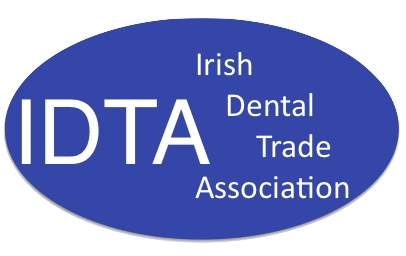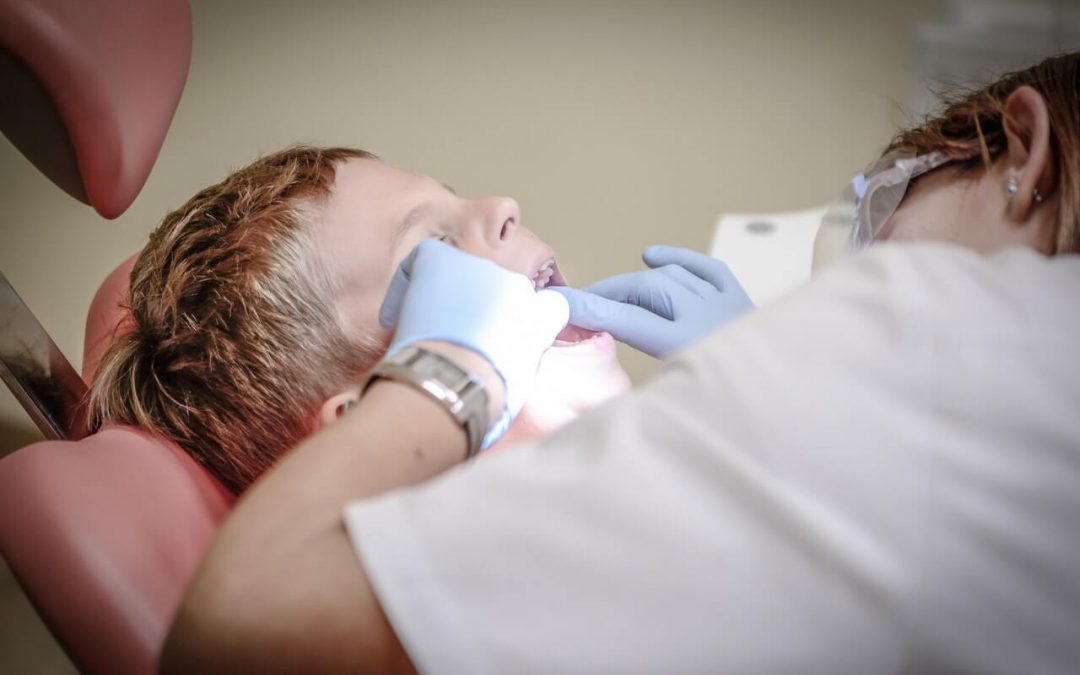By Robert Patrick
The dental business landscape is changing rapidly, perhaps more quickly than many may have thought possible. If you want your practice to be successful, you must understand the current state of the dental market. To better understand what’s going on, we need to examine the facts about what we are experiencing, where we are going, and what we can do about it when we get there.
Examining the current industry landscape, we see that as of 2015, there were about 195,000 practicing dentistsin the United States. While there seem to be sufficient numbers of dentists serving patients, there are actually not enough to fully serve the current need. There is an estimated shortage of 7,300 dentists nationally.
Some reports say there are more dentists retiring each year than there are dental school graduates to replace them. Others say there are enough dentists to provide care, but because most dentists take on the burden of running their own business while paying off growing student loan debt, working in an affluent area that promises profit is more appealing than working in a low-income and Medicaid-reliant area. This can lead to “dental deserts.” As of 2013, there were 4,595 dental desert designations with a total population of 45,086,843 people, including an estimated total underserved population of 30,605,273.
Contrarily, even with the shortage, many providers say they aren’t busy enough and are growing frustrated because earnings haven’t kept up with inflation. Additionally, there is a current and measured move away from solo practice caregiving into the group setting for many providers. Consolidation is increasingly driven by dental service organization (DSO) investment.
In fact, the number of large dental practices has grown more than 25% in recent years, but still represents less than 10% of the overall marketplace. However, that is changing dramatically. Also known as “corporate dentistry,” DSOs are experiencing an investment boom.
One recent study shows a proliferation of dental service organizations over the past five to 10 years, with the largest chains increasing their number of practices at an annualized rate of 13% to 14% compared with a 2% to 4% pace of broader dental spending. According to the study, DSOs own or control about 16% of all dental practices in the United States and will grow by about 15% annually over the next five years, with US penetration reaching 30% by 2021.
Why DSOs?
DSOs bring tremendous value to dentists and their patients. As a business model, they enable dentists to expand access to care, improve efficiency of office administration, reduce the procurement cost of dental care supplies, deploy technologies to improve patient care and safety, and even enable same-day dentistry.
For patients, DSOs usually mean lower cost of care. DSOs also typically participate in preferred provider organization (PPO) insurance networks, which are on the rise throughout dentistry. Because of their volume-based business operations, DSOs can take less in reimbursement from insurers because of the increased volume of patients they can provide access to care by having in-network agreements with insurers. In many cases, solo practices cannot compete on volume or afford the required discount prices certain insurers require to join their networks.
DSO growth also is fueled by their corporate planning and marketing structure. For example, these practices generally are located in convenient, highly trafficked areas to promote easy patient access and often engage heavily in community marketing to increase the number of patients seeking care. DSOs also market more aggressively to the markets they’re in, investing in media where smaller practices can’t because of cost constraints, such as television, radio, and outdoor advertising.
Advantages of Working for a DSO
The advantages that dentists gain from working with a DSO are usually obvious. The DSO business model supports enhanced capacity, access to providers, and consistent care. Dentists who choose to become associates in such a model focus almost exclusively on patient care. They do not practice business, as is the case in solo practice.
Also, lower overhead costs enable DSO-supported dentists to accept all payer types. Plus, group practices support peer-to-peer interaction, evidence-based treatment protocols, access to new technology, training, mentorship, and formal compliance programs, often resulting in consistent care for patients.
Additionally, DSOs commonly allow for more life outside the office and freedom for caregivers to work where they want, even enabling them to relocate mid-career without the worry of starting over.
But perhaps the most popular reason dentitsts take up employment with a DSO is the encumbering debt invested in their education, upward of $250,000 or more. This keeps many dentists from starting their own practice.
A DSO or multi-provider group can alleviate most of the burden of building a business, including patient procurement and providing care. Those who try to set up their own practice face stifling business requirements, including keeping up with technology, managing operational costs, ensuring patient visits, complying with regulation, handling legal issues, marketing the practice, and processing payments.
Why Solo Practices?
With all that DSOs have going for them, many dentists still elect to go the solo route, primarly so they can be their own boss. Solo practitioners determine their practice vision and goals. All clinical and management decisions are compromise-free (for the most part), and personnel selection and staffing, patient and practice policies and protocol, procedures and materials, equipment, budgeting, internal and external marketing projects, facility and technology improvements, and continuing education are all at the dentist’s discretion.
This freedom of choice leads to other freedoms: freedom of how much to work and when, how many patients to take on, how much time to spend with patients, the amount of marketing needed to build the practice, and the freedom required to run the business independently. However, dentists considering a solo practice must be realistic in their business plans and expectations.
Small partnerships of two or three doctors are expected to increase significantly as the profession moves to the multi-doctor business model to compete in the future dental environment. As more chain practices enter the marketplace, there will be more competition. While single-location practices may thrive, there is a strong likelihood that they will experience contraction as patients begin seeking services that fit more closely into their lives, with flexible hours and more affordable service options.
Cost always will be a major concern for dental patients, who think that nearly all provided services cost too much. In many cases, the price of services is what keeps patients from being loyal, driving them to shop around for a provider willing to do the same work for less.
Small Practices Speak
According to a comprehensive 2016 NEA Powered by Vyne survey of the dentists served by the company (more than 50,000 dental care providers use its FastAttach electronic claims attachment solution), an overwhelmingly popular response to the question, “What are (some of the) most frustrating or challenging aspects of managing the business side of your practice?” was “managing insurance companies, their reimbursement schedules, rising fees and lower reimbursements.” PPOs are specifically called out as a problem for many small practices.
Other concerns expressed by dentists surveyed included “staff” and “staffing issues” and lack of patient engagement, including lack of patients and patient no-shows. Combined, these challenges can become major financial impediments to building a successful and financially stable dental practice. These frustrations, primarily expressed by solo or small group dental practice dentists, further stake a claim for why there is a trend toward DSOs.
When asked, “Which areas are you most interested in improving in your practice?” the overwhelming responses were managing insurance and finding new patients.
None of these concerns implies that practicing dentists and caregivers are ready to walk away from their solo or small group practices, but these frustrations do seem to indicate why DSOs continue to gain traction as a viable business model.
Challenges with Technology
The dental sector is currently in the perfect storm for transformation because reimbursements are down, supply is up, technology is expensive, and educational debt is high, so consolidation is coming. But technology does not seem to be a major problem for many practice leaders, even though some do reportedly consider managing technology to be a financial burden. In the NEA study previously mentioned, only a handful of the several hundred respondents surveyed mentioned technology as a concern that affects the long-term health of their practice, and those who did pointed to the cost.
Even so, the use of electronic health records, scheduling solutions, and health information exchange technology is expected to rise in dental care. According to DentistryIQ, the dental market will continue to see improved growth in consumables and technology, fueled by increased patient demand and education. Given the sentiment of good will toward technology, its investment likely has a solid future for most, and it doesn’t appear to a roadblock for many.
Learning from Each Other
No one dental practice model is better than another. Different strokes for different folks. Each business model offers its benefits, and each can likely teach the other a thing or two.
Solo or small practices remain nimble and entrepreneurial and appear to have their technology in efficient order. They also are usually built by figureheads of the community, dentists who are known and admired where they live and work. In contrast, while heavily marketed to the communities they serve, DSOs are brands more than they are community builders. While solo practitioners live and die by their relationships with their patients and communities, DSOs and their dentists are not held to the same standard. DSOs have plenty to do still to humanize their brands.
Feedback from the solo crowd tells us exactly what’s top of mind for these practice leaders. Issues with insurance (reimbursements and terms, primarily), staff inefficiencies, and patient volume are among the most pressing. The most challenging here may be patient volume. Even if solo practices are able to add more patients, they then may not be equipped to handle the additional numbers.
DSOs and corporate dental understand the importance of sound management from the beginning. Dental corporations generally are methodical in their fee positioning, and they often negotiate with PPOs for better rates.
Finally, practice leaders can take certain steps to compete for patients more effectively with DSOs. For example, small practices can follow the lead of DSO practices by building a high-converting website, conducting regular search engine optimisation efforts, conducting regular social media marketing, and working to establish word of mouth marketing through efforts like online reviews and patient testimonials.
The Changed Landscape
There is no doubt that the dental care sector has evolved. Patients and their spending habits are constantly changing, which means practices must adjust. For dentists running their own practices, DSOs are tough competition. The ADA estimates that 16.3% of new dentists ages 21 to 34 work for DSOs. DSOs are very efficient with professional corporate management, in-house training “universities,” and other benefits for participating dentists.
For every young dentist aiming to buy a solo practice, there are four older dentists looking to retire. This represents a buyers’ market, and many DSOs are aggressively taking advantage of the opportunity.
Despite this, the dental sector is healthy and thriving. Although DSOs are making headway, small practices are still the standard bearer for the industry. Both have their advantages and disadvantages. Small practices continue to provide excellent opportunities for dentists and the patients they represent, while the reach of DSOs is expanding and providing dentists and patients with convenient options for care. Without the benefit of a crystal ball or time machine, there’s no way to predict what the future may hold. For now, dentists and patients can enjoy the best of both worlds.
Mr. Patrick is president of dental sales and services at Vyne. A graduate of Troy University with a bachelor’s degree in computer science, he has more than 20 years of experience in software and product development. Previously, he served as the global director of product line management at Carestream Dental.


